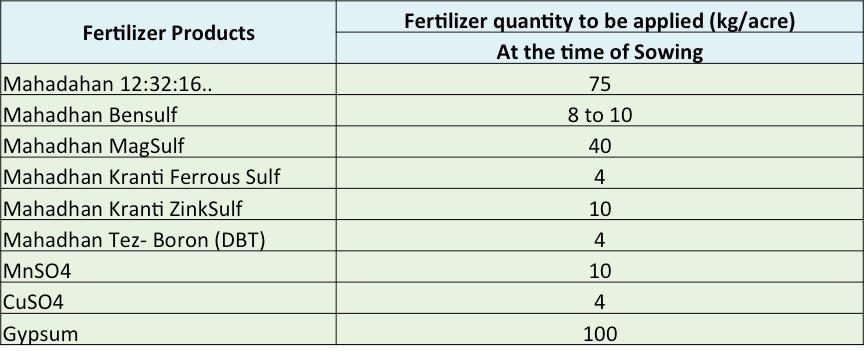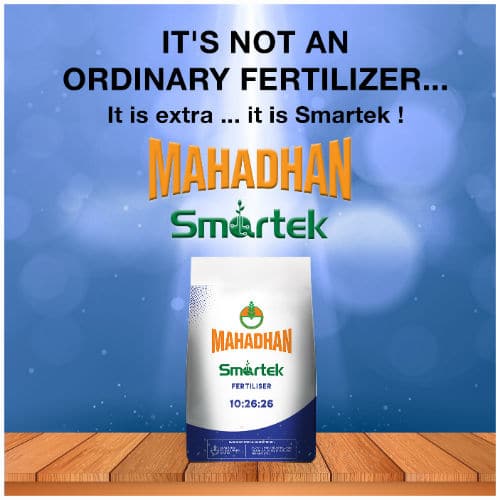
Groundnut Farming Tips
Climatic conditions, such as temperature and rainfall, significantly influence groundnut crop production. Temperature is a major environmental factor that determines the rate of crop development. Adequate and well distributed rainfall during the growing season, especially during flowering, pegging and pod formation stages, is essential for maximum yield and quality of the groundnut seed. Groundnut is grown in areas receiving 600 to 1500 mm of rainfall.
Groundnut is grown in well-drained sandy loam or sandy clay loam soils. Deep, well-drained soils with 6.5–7 pH and high fertility are ideal for groundnut production.
Timely field preparation facilitates timely sowing, which ensures higher yield.
Land preparation should ensure that all crop residues, crop volunteers and weeds are completely buried. Summer ploughing is advantageous to kill the weed seeds, hibernating insects and disease causing organisms, by exposing them to the heat of summer
Seed rates of 32–40 kg/ac are followed for bunchy type varieties and lower rates of 24–32 kg/ac are adopted for spreading types. Sowing should be done about 5 cm deep behind the plough or with the help of a dibbler or seed planter. The spacing also varies accordingly with row to row distance of 30–40 cm in bunchy types and 45–60 cm for spreading varieties. Plant to plant distance would be 15 cm for bunch and and 20 cm for spreading types.
To control weeds and keep the soil in a friable condition, soil is hoed once or twice in the first one or two months. No intercultural operations are to be done after the pegs have commenced going underground.
Groundnut farmers generally apply NPK fertilisers to the groundnut crop. However, it has been observed that application of secondary and micronutrients help in meeting the ground crop nutrition requirements in a better manner, enhancing the yield and quality of groundnut crop. Accordingly, fertiliser schedules have been designed and recommended for soil and foliar applications.
Groundnut needs special attention with regards to its nutritional requirements. Farmers should apply required quantities of macro, secondary and micronutrients for better crop growth and higher yield and sugar recovery. Deficiencies of N, P, K, S, Mg, Fe, Zinc and Boron are often noticed in sugarcane plantations. Hence, it is important that these nutrients are appropriately supplied through application of right fertilisers at right time.
Nitrogen, Phosphorus, Potassium, Calcium, Magnesium, Sulphur, Iron, Manganese, Zinc, Copper and Boron
Mahadhan provides a range of fertiliser products that groundnut farmers can use for application directly to the soil or through the drip system. There are also fertiliser products that farmers can apply to the crop through foliar sprays. The schedules are detailed below.
Fertiliser schedule recommended for groundnut crop (Soil application) (Table 1) :

Foliar application recommended for groundnut crop (Table 2) :

Irrigation is critical during pegging, flowering and pod development phases, when adequate soil moisture is essential.
Weeds
Groundnut is a crop widely grown in light soils where the weed menace varies from region to region. In sandy soils, the grassy weed infestation is more compared to BLWs, while in Red soils the BLWs are a major problem.
Weed Management
- Pre-sowing soil application of Fluchloralin (0.8 l/ac) or pre-emergence application of Fluchloralin (0.8 l/ac) or Pendimethalin (3.3 l/ha) on the third day after sowing, followed by irrigation.
- Spray application of Imazethapyr (300 ml/ac) as a post emergence spray, 20–30 days after sowing, based on weed density
- In case weeds are present at later stage of crop development, any post-emergence herbicide like Acifluorfen 16.5% with Sodium cladinofop 88% EC (400 ml/ac) or Imazethapyr 3.75% with Propaquizafop 2.5% (800 ml/ac) or Fomesafen with Quizalofop EC (400 ml/ac) may be applied
- Gram pod borer Management
- Deep summer ploughing & intercropping one row of redgram for every 5 or 6 rows of groundnut
- Install pheromone trap @ 5/ha
- Spraying of insecticides like Quinolphos 2 ml/lit of water or Chloropyriphos 3ml/lit of water or Rynaxypyr 185 SC @ 60 ml/ac or Flubendamide 480 SC @ 40 ml/ac or Novaluron 10% EC @ 250 ml/ac or Emamectin benzoate 5% SG @ 50 g/ac or (Novaluron + Indoxacarb) SC @ 350 ml/ac
- Tobacco caterpillar Management
- Grow castor as border or intercrop in groundnut fields to serve as indicator or trap crop
- Collect egg masses and destroy
- Spraying of insecticides to control the early instar (1st to 3rd instar) larvae Carbaryl 50 WP 2.0 kg/ha or Quinalphos 25 EC 750 ml/ha or Rynaxypyr 185 SC @ 60 ml/ac or Flubendamide 480 SC- 40 ml/ac or Novaluron 10% EC- 250 ml/ac or Emamectin benzoate 5% SG- 50 g/ac or (Novaluron + Indoxacarb) SC @ 350 ml/ac.
- Rust disease management
Spraying of Mancozeb @0.4 kg/acre or Chlorothalonil @ 0.4 kg/acre or Wettable sulphur @ 1 kg /acre or Tridemorph @ 200 ml/acre - Management of early leaf spot disease
Spraying of fungicides like Carbendazim @ 200 g/acre or Mancozeb @ 400 g/acre or Chlorothalonil @ 400 g/acre
Drying and falling of older leaves and yellowing of the top leaves indicates maturity. Pull out a few plants at random and shell the pods. If the inner shell is brownish black and not white, then the crop has matured. If the soil is dry irrigate prior to harvest, as this will facilitate easy harvesting.
Can we help you?















